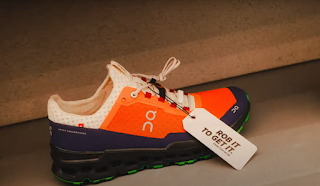Many of my patients are now running on trails, making the switch from running on the road which they say is boring. There are also many more organized trail races world wide, and many of our patients participate in these trail races.
What does it take to become a better trail runner? A recent published study compared elite and recreational trail runners in a series of lab tests and found that the elite runners were more efficient over both hilly and level terrain (Besson et al 2023). As a result, they required less energy to maintain a given pace. They were found to have greater leg strength compared to recreational runners.
The same researchers found similar results when they compared elite trail and elite road runners. The trail runners had stronger leg muscles and were more efficient on hilly terrain (Sabater et al, 2023)
So, do leg strengthening exercises if you want to run better on the trails. Other than visiting the weights room, you can carry a heavier backpack while climbing stairs or walking/ running up and down stadium steps. I used to wear a weight vest while training for the Oxfam Hong Kong Trailwalker event at the old National Stadium steps. It definitely made the uphill sections easier during the event.
Another pattern that has turned up in studies of hilly running trail races is to keep your effort and not your pace constant. The faster finishers showed greater variability in their pacing. They ran slower (or walked) on the steeper sections and ran faster on the downslopes to make up time (Corbi-Santamariaet al, 2023).
Most trail runners tend to have a fixed pace and try maintain that regardless of terrain. A more efficient strategy is slow down on the uphills and speed up on the downhill sections relative to your average pace. So don't push harder on the up slopes to keep pace, slow down instead to keep your effort constant. You can run faster on the downslopes to get back the time you lost for those who are racing.
Please bear in mind that there's a skill to running fast downhill, particulary on technical terrain. More so during ultras as more than10 hours of racing makes one very fatigued. Not worth having a catastrophic fall while running downhill.
Are trekking poles useful? Usage of trekking poles can be contentious among trail runners. Giovanelli and colleagues (2023) tested runners on the steepest treadmill in the world, in their lab. Their treadmill can be set to 45 degrees, at a grade of 100 percent! They found that using trekking poles does not save energy, but they do save your legs. On a hill climb of 20 degrees incline, runners applied 5 percent less force on their legs but reached the top 2.5 percent faster.
Even Killian Jornet uses trekking poles (pictured above). Why shouldn't you?
There you go, three ways to become a better trail runner. Strength training, varying your pace and trekking poles. Watch out for tree roots on the trails while running!
References
Besson, T, Sabater PF, Varesco G et al (2023). Elite Vs Experienced Male And Female Trail Runners: Comparing Running Economy, Biomechanics, Strength, And Power. J Strength Cond Res 1: 37(7): 1470-1478. DOI: 10.1519/ JSC.0000000000004412
Sabater PF, Besson T, Berthet M et al (2023). Elite Road Vs Train Runners: Comparing Economy, Biomechanics, Strength, And Power. J Strength Cond Res 1: 37(1): 181-186. DOI: 10.1519/ JSC.0000000000004226
Corbi-Santamaria P, Herrero-Molleda A, Garcia-Lopez J et al (2023). Variable Pacing Is Associated With Performance During The OCC Ultra-Trail Du Mont-Blanc (2017-2021_. Int J Environ Res Pub Health. 13: 20(4): 3297. DOI: 10.3390/ijerph20043297
Giovanelli N, Pellegrini B, Bortolan L et al (2023). Do Poles Really "Save The Legs" During Uphill Pole Walking At Different Intensities? Eur J Appl Physiol. DOI: 10.1007/s00421-023--05254


































.png)
.png)







